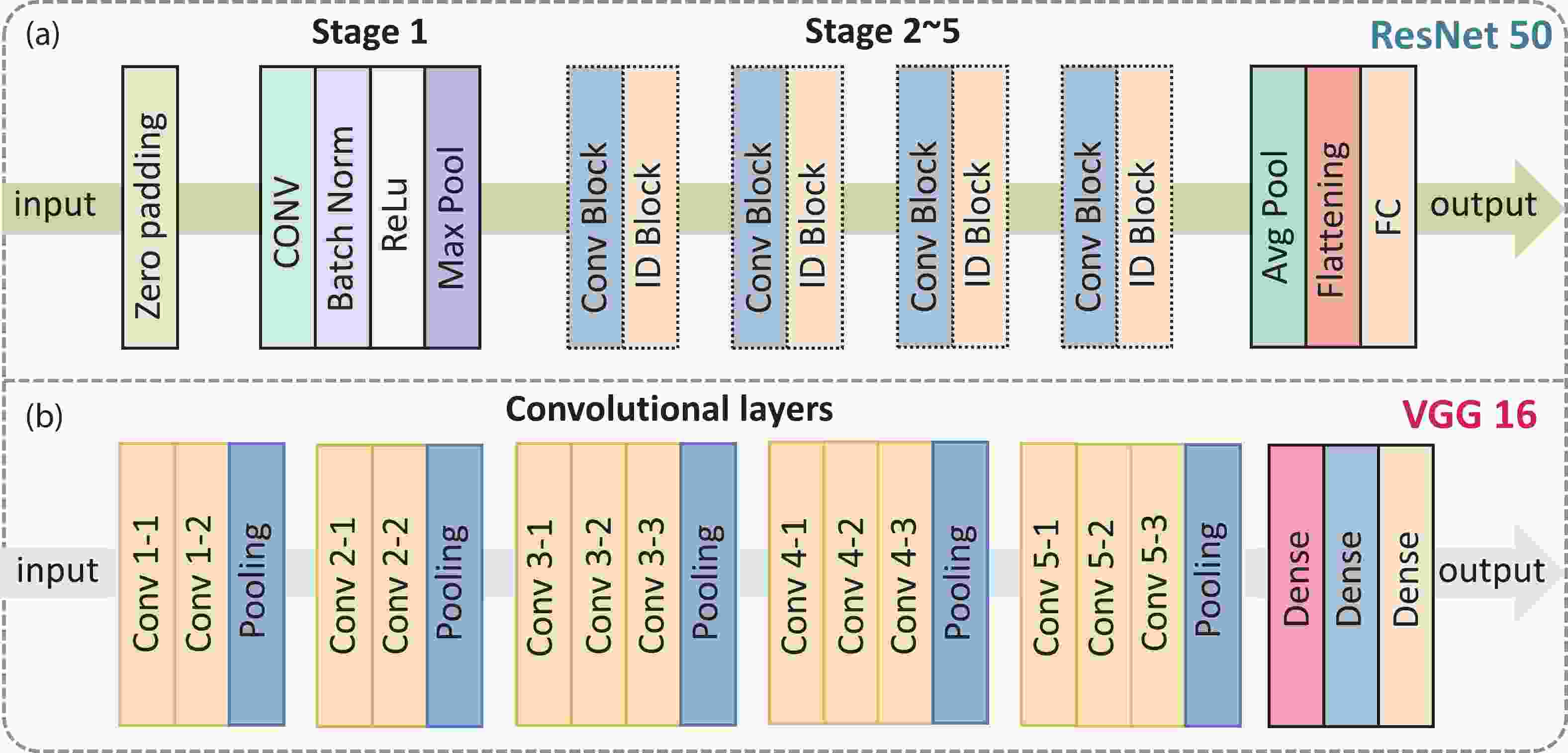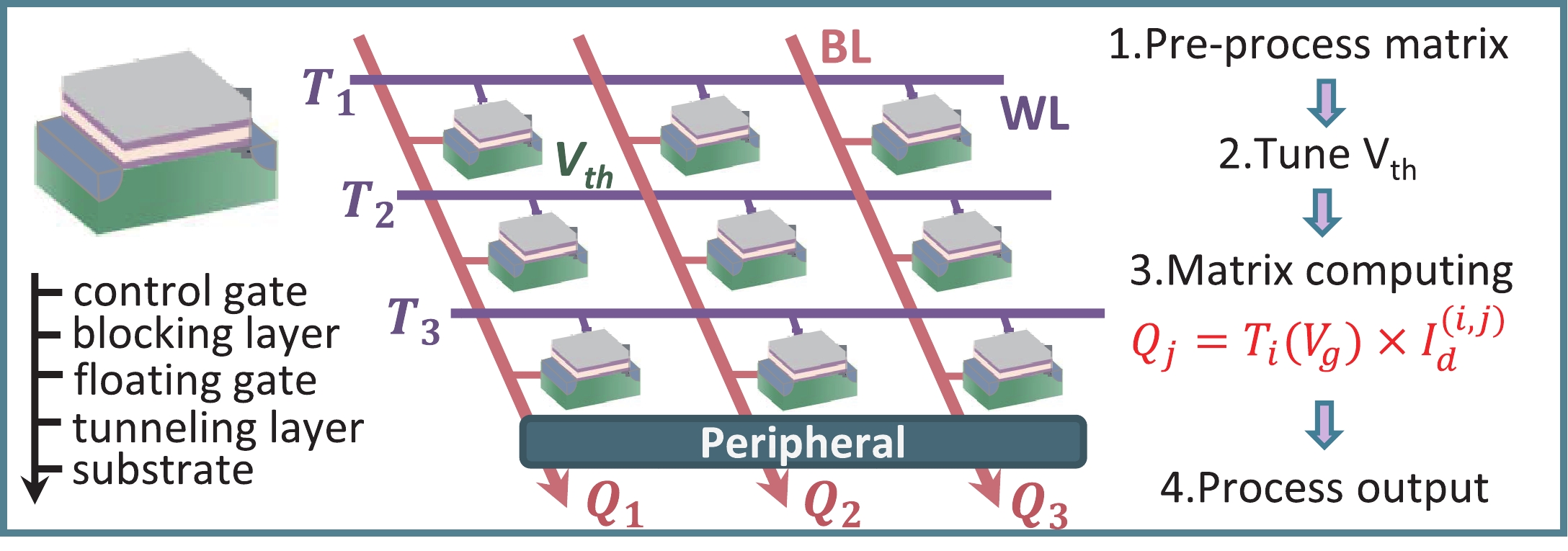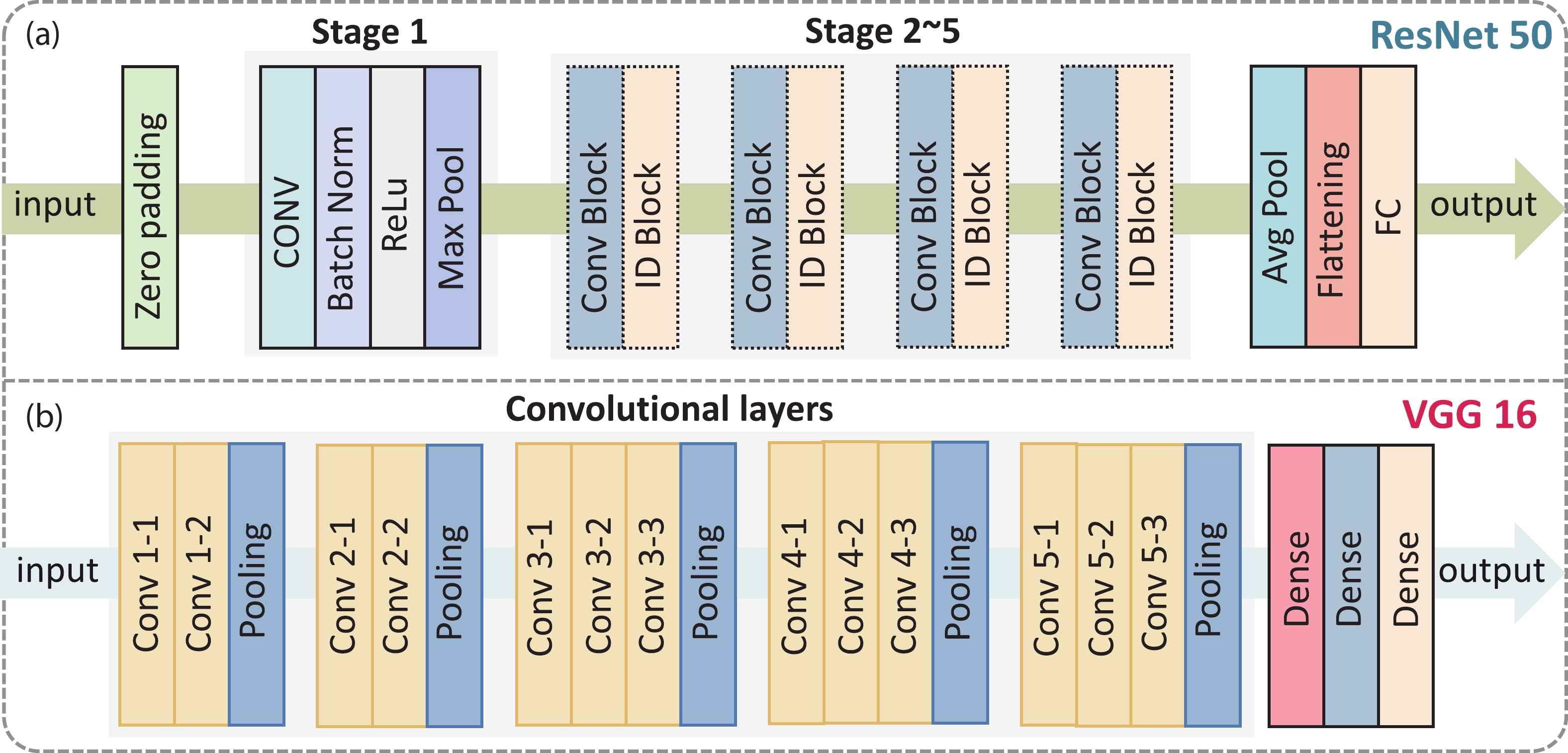| Citation: |
Yang Feng, Zhaohui Sun, Yueran Qi, Xuepeng Zhan, Junyu Zhang, Jing Liu, Masaharu Kobayashi, Jixuan Wu, Jiezhi Chen. Optimized operation scheme of flash-memory-based neural network online training with ultra-high endurance[J]. Journal of Semiconductors, 2024, 45(1): 012301. doi: 10.1088/1674-4926/45/1/012301
Y Feng, Z H Sun, Y R Qi, X P Zhan, J Y Zhang, J Liu, M Kobayashi, J X Wu, J Z Chen. Optimized operation scheme of flash-memory-based neural network online training with ultra-high endurance[J]. J. Semicond, 2024, 45(1): 012301. doi: 10.1088/1674-4926/45/1/012301
Export: BibTex EndNote
|
Optimized operation scheme of flash-memory-based neural network online training with ultra-high endurance
doi: 10.1088/1674-4926/45/1/012301
More Information-
Abstract
With the rapid development of machine learning, the demand for high-efficient computing becomes more and more urgent. To break the bottleneck of the traditional Von Neumann architecture, computing-in-memory (CIM) has attracted increasing attention in recent years. In this work, to provide a feasible CIM solution for the large-scale neural networks (NN) requiring continuous weight updating in online training, a flash-based computing-in-memory with high endurance (109 cycles) and ultra-fast programming speed is investigated. On the one hand, the proposed programming scheme of channel hot electron injection (CHEI) and hot hole injection (HHI) demonstrate high linearity, symmetric potentiation, and a depression process, which help to improve the training speed and accuracy. On the other hand, the low-damage programming scheme and memory window (MW) optimizations can suppress cell degradation effectively with improved computing accuracy. Even after 109 cycles, the leakage current (Ioff) of cells remains sub-10pA, ensuring the large-scale computing ability of memory. Further characterizations are done on read disturb to demonstrate its robust reliabilities. By processing CIFAR-10 tasks, it is evident that ~90% accuracy can be achieved after 109 cycles in both ResNet50 and VGG16 NN. Our results suggest that flash-based CIM has great potential to overcome the limitations of traditional Von Neumann architectures and enable high-performance NN online training, which pave the way for further development of artificial intelligence (AI) accelerators. -
References
[1] Yao P, Wu H Q, Gao B, et al. Fully hardware-implemented memristor convolutional neural network. Nature, 2020, 577, 641 doi: 10.1038/s41586-020-1942-4[2] Khwa W S, Akarvardar K, Chen Y S, et al. MLC PCM techniques to improve nerual network inference retention time by 105X and reduce accuracy degradation by 10.8X. Proc IEEE Symp VLSI Technol, 2020, 1[3] Zhang W Y, Wang S C, Li Y, et al. Few-shot graph learning with robust and energy-efficient memory-augmented graph neural network (MAGNN) based on homogeneous computing-in-memory. 2022 IEEE Symposium on VLSI Technology and Circuits (VLSI Technology and Circuits), 2022, 224[4] Kumar S, Wang X X, Strachan J P, et al. Dynamical memristors for higher-complexity neuromorphic computing. Nat Rev Mater, 2022, 7, 575 doi: 10.1038/s41578-022-00434-z[5] Lu Y M, Li X, Yan B N, et al. In-memory realization of eligibility traces based on conductance drift of phase change memory for energy-efficient reinforcement learning. Adv Mater, 2022, 34, 2107811 doi: 10.1002/adma.202107811[6] Huang P, Zhou Z, Zhang Y, et al. Dual-configuration in-memory computing bitcells using SiOx RRAM for binary neural networks. APL Mater, 2019, 7, 081105 doi: 10.1063/1.5116863[7] Chang C C, Chen P C, Chou T, et al. Mitigating asymmetric nonlinear weight update effects in hardware neural network based on analog resistive synapse. IEEE J Emerg Sel Top Circuits Syst, 2018, 8, 116 doi: 10.1109/JETCAS.2017.2771529[8] Ravsher T, Garbin D, Fantini A, et al. Enhanced performance and low-power capability of SiGeAsSe-GeSbTe 1S1R phase-change memory operated in bipolar mode. 2022 IEEE Symposium on VLSI Technology and Circuits (VLSI Technology and Circuits), 2022, 312[9] Ielmini D, Ghetti A, Spinelli A S, et al. A study of hot-hole injection during programming drain disturb in flash memories. IEEE Trans Electron Devices, 2006, 53, 668 doi: 10.1109/TED.2006.870280[10] Wu W, Wu H Q, Gao B, et al. A methodology to improve linearity of analog RRAM for neuromorphic computing. 2018 IEEE Symposium on VLSI Technology, 2018, 103 doi: 10.1109/VLSIT.2018.8510690[11] Wang Q W, Park Y, Lu W D. Device variation effects on neural network inference accuracy in analog In-memory computing systems. Adv Intell Syst, 2022, 4, 2100199 doi: 10.1002/aisy.202100199[12] Ogawa S, Shiono N. Interface-trap generation induced by hot-hole injection at the Si-SiO2 interface. Appl Phys Lett, 1992, 61, 807 doi: 10.1063/1.107751[13] Choi W, Kwak M, Heo S, et al. Hardware neural network using hybrid synapses via transfer learning: WO x nano-resistors and TiO x RRAM synapse for energy-efficient edge-AI sensor. 2021 IEEE International Electron Devices Meeting (IEDM), 2021, 23.1. 1[14] Ali T, Seidel K, Kühnel K, et al. A novel dual ferroelectric layer based MFMFIS FeFET with optimal stack tuning toward low power and high-speed NVM for neuromorphic applications. 2020 IEEE Symposium on VLSI Technology, 2020, 1 doi: 10.1109/VLSITechnology18217.2020.9265111[15] Lue H T, Hsu P K, Wei M L, et al. Optimal design methods to transform 3D NAND flash into a high-density, high-bandwidth and low-power nonvolatile computing in memory (nvCIM) accelerator for deep-learning neural networks (DNN). 2019 IEEE International Electron Devices Meeting (IEDM), 2020, 38.1.1 doi: 10.1109/IEDM19573.2019.8993652[16] Malavena G, Spinelli A S, Compagnoni C M. Implementing spike-timing-dependent plasticity and unsupervised learning in a mainstream NOR flash memory array. 2018 IEEE International Electron Devices Meeting (IEDM), 2019, 2.3.1 doi: 10.1109/IEDM.2018.8614561 -
Proportional views






 DownLoad:
DownLoad:
























